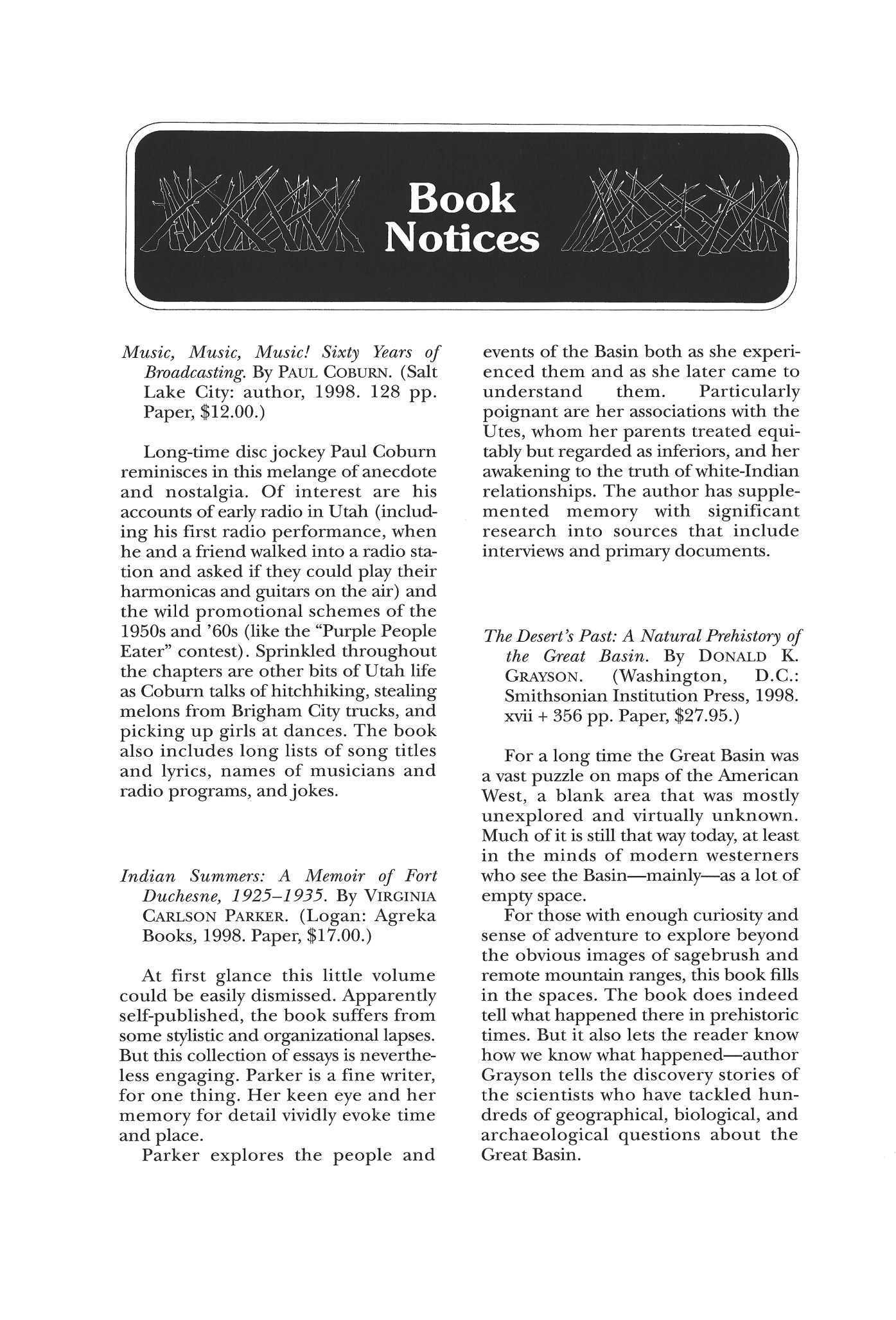
3 minute read
Book Notices
Music, Music, Music! Sixty Years of Broadcasting.
By PAUL COBURN. (Salt Lake City: author, 1998. 128 pp. Paper, $12.00.)
Long-time disc jockey Paul Coburn reminisces in this melange of anecdote and nostalgia Of interest are his accounts of early radio in Utah (including his first radio performance, when he and a friend walked into a radio station and asked if they could play their harmonicas and guitars on the air) and the wild promotional schemes of the 1950s and '60s (like the "Purple People Eater" contest). Sprinkled throughout the chapters are other bits of Utah life as Coburn talks of hitchhiking, stealing melons from Brigham City trucks, and picking u p girls at dances The book also includes long lists of song titles and lyrics, names of musicians and radio programs, and jokes
Indian Summers: A Memoir of Fort Duchesne, 1925-1935.
By VIRGINIA CARLSON PARKER. (Logan: Agreka Books, 1998. Paper, $17.00.)
At first glance this little volume could be easily dismissed. Apparently self-published, the book suffers from some stylistic and organizational lapses But this collection of essays is nevertheless engaging Parker is a fine writer, for one thing Her keen eye and her memory for detail vividly evoke time and place.
Parker explores the people and events of the Basin both as she experienced them and as she later came to understand them Particularly poignant are her associations with the Utes, whom her parents treated equitably but regarded as inferiors, and her awakening to the truth of white-Indian relationships. The author has supplemente d memory with significant research into sources that include interviews and primary documents.
The Desert's Past: A Natural Prehistory of the Great Basin.
By DONALD K. GRAYSON (Washington, D.C : Smithsonian Institution Press, 1998. xvii + 356 pp Paper, $27.95.)
For a long time the Great Basin was a vast puzzle on maps of the American West, a blank area that was mostly unexplored and virtually unknown Much of it is still that way today, at least in the minds of modern westerners who see the Basin—mainly—as a lot of empty space.
For those with enough curiosity and sense of adventure to explore beyond the obvious images of sagebrush and remote mountain ranges, this book fills in the spaces The book does indeed tell what happened there in prehistoric times. But it also lets the reader know how we know what happened—author Grayson tells the discovery stories of the scientists who have tackled hundreds of geographical, biological, and archaeological questions about the Great Basin







